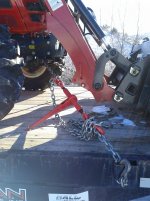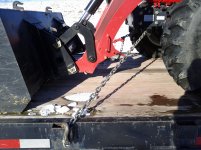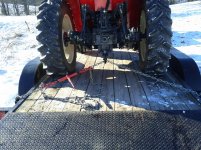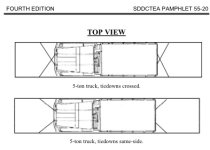FF117
Silver Member
I recently purchased my first tractor hauling trailer and would like some help getting the tie-downs set up correctly. I've attached some pics of one possibility. I was thinking about changing the front so that the chains cross and are attached to the hooks using two binders instead of one. I assume these hooks on the tractor are made for transport?
I'm a little concerned how the rear is set up with the chain running though the clevis on the drawbar. I can't figure out another good way to attach it unless I wrap the chain around the axle.
Suggestions appreciated. Thanks
Note: The pics don't show the ratchet straps for the loader. Also, I didn't tow like this, just asking before I make a mistake.



I'm a little concerned how the rear is set up with the chain running though the clevis on the drawbar. I can't figure out another good way to attach it unless I wrap the chain around the axle.
Suggestions appreciated. Thanks
Note: The pics don't show the ratchet straps for the loader. Also, I didn't tow like this, just asking before I make a mistake.




